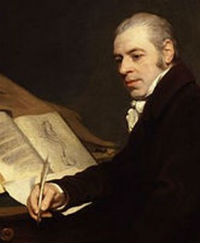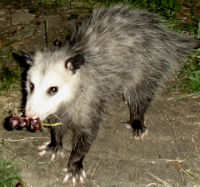An Opossum-coatimundi Hybrid?
Hybrids out of History
EUGENE M. MCCARTHY, PHD GENETICS, ΦΒΚ
|
A diligent scholar is like a bee who takes honey from many different flowers and stores it in his hive.
—John Amos Comenius
|
 Joshua Brookes
Joshua Brookes Virginian Opossum
Virginian Opossum(Didelphis virginiana)
(Nasua nasua)
To be accepted as real, this distant cross would require formal verification, but such a hybrid is in fact listed in a catalog of the specimens held in the Brookesian Museum of Comparative Anatomy, a collection created by the English anatomist and zoologist, Joshua Brookes (1761-1833). Brookes was a fellow of the Royal Society, the Linnaean Society and the Zoological Society of London, and was such a widely respected scientist that Jerdan (1834, p. 11) says that “during his long professional career, no zoologist or foreigner of distinction ever came to this kingdom without paying him a visit.”
The catalog (Brookes 1830, p. 101) contains the following brief listing: “a hybrid fœtus said to be bred between the Coati Mundi and Opossum,” without further explanation. The phrasing “said to be” seems to suggest that Brookes had no personal knowledge of the origin of the fetus in question.
No details are given, so this alleged cross might refer to either of the two generally recognized coatimundis (Nasua nasua or Nasua narica), and to any of the various opossums. However, in 1830 the Virginia opossum had received far more scientific attention than any other animal now designated by the name opossum, and at that time, as today, anyone who spoke simply of “the opossum” would be understood to refer to the familiar Virginia opossum. So Brookes almost surely refers to Didelphis virginiana.
The disparity of the alleged parents in this cross, the lack of detail, as well as the apparent hearsay nature of the single bit of information actually conveyed, all speak against the credibility of this record. Indeed, in terms of modern classification schemes, practically any other pairing of two mammals would involve creatures less distantly related. Moreover, there can be no question of examining the specimen today. Brookes sold off his collection not long before his death (Jerdan 1834). But his claim that such a fetus once existed is nevertheless included here for the sake of completeness, and because of his reputation. He was, after all, the foremost English comparative anatomist of his day.
By the same author: Handbook of Avian Hybrids of the World, Oxford University Press (2006).